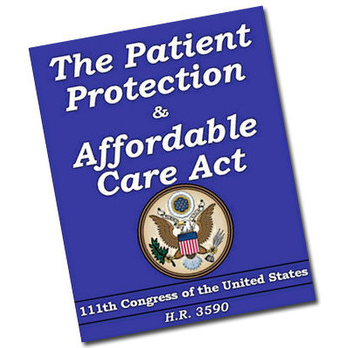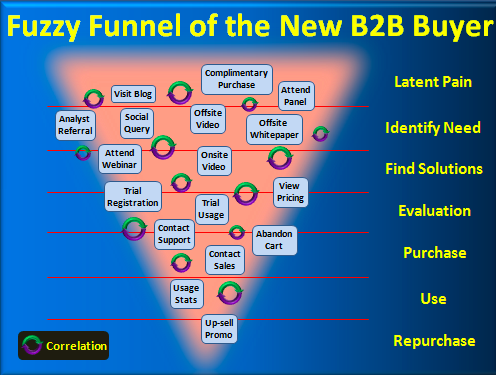Uncategorized
Challenges, Opportunities in Store for ASCs in 2015
by Joshua Schneck

 | December 10, 2014
| December 10, 2014
Challenges, Opportunities in Store for ASCs in 2015
Ambulatory Surgery Centers (ASCs) face unique opportunities and challenges among healthcare providers in the coming year. For a healthcare system focused on controlling costs and improving quality, ASCs offer a high-quality, cost-effective alternative to surgical procedures conducted in the hospital. However, ASCs face significant challenges – including a maturing market, reimbursement issues and evolving regulatory policies – that can impact their bottom lines and continue to force them to play on an uneven competitive field.
On The Bright Side
The good news for ASCs is that volume growth is expected to continue as Medicare and private payers favor the lower costs of ASCs when compared to hospitals. In an investment report issued this month by Standard & Poor’s on AmSurg Corporation, a large, publicly held operator of ASCs, S&P cited strong demand stemming from an aging population and increasing use of outpatient services. This growth outlook was echoed in a report on ASCs by Moody’s Investor Services.
Medicare and Medicare beneficiaries currently share in more than $2.6 billion in annual savings for procedures performed at ASCs when compared to what those procedures would cost in the hospital outpatient department (HOPD), reports the Ambulatory Surgery Center Association (ASCA). These savings are realized in what Medicare pays for a procedure and also in lower co-pays by the beneficiaries. The ASCA notes that if just half of the eligible procedures were moved from hospital outpatient departments to ASCs, an additional $2.5 billion dollars could be saved annually.
New payment models may also come to benefit ASCs. While Moody’s expressed concern that the shift to bundled payments may not be positive for ASCs, Jameson Pearlman, VP of Managed Care at Meridian Surgical Partners, says ASCs are well positioned to participate in accountable care organizations, patient-centered medical homes and population management initiatives.
“Payers are moving more and more towards shared savings models, which are ideal for ASCs because we can better control anesthesia, implant, supply, and labor costs and still deliver high quality within a single episode of care,” says Pearlman in an interview with Becker’s ASC Review. “Bundled payments are a great opportunity for ASCs to align incentives with payers to ensure greater patient access and participation within evolving narrow networks focused on greater efficiency and accountability.”
Maturing ASC Market Means Changes
Many ASCs, especially independent ASCs, face challenges as the ASC market matures, competition increases in their market area and more hospitals open or purchase ASCs. Moody’s points out that larger players, with economies of scale and joint ventures with hospitals and physician groups, are best positioned to benefit. High performing ASCs will also be those that concentrate on procedures that generate higher revenues per treatment, such as pain management and orthopedics, according to Moody’s.
Pearlman reports excessive competition for procedure volume is depressing private reimbursement rates. “There are some ASCs in saturated markets that are accepting rates well below market and in turn payers use those lower rates as a baseline when comparing other ASCs,” says Mr. Pearlman. “Then our rates are undercut and it’s difficult to show payers why we need the higher fees to cover our expenses.”
Low reimbursement rates from Medicare are also a major issue for ASCs, even with the increase contained in Medicare’s final 2015 ASC payment rule, issued on October 31, 2014. CMS adopted an overall payment rate adjustment of 1.4 percent for ambulatory surgical centers, up from the proposed increase of 1.2 percent. But HOPDs received a larger increase, widening the gap between what Medicare pays ASCs versus HOPDs for the same procedure.
According to the ASCA, Medicare pays hospitals 81 percent more than ASCs for the same procedure. As recently as 2003 Medicare paid hospitals about 16 percent more. As a result, says the ASCA, hospitals are purchasing ASCs, converting them to hospital outpatient facilities and charging the higher outpatient rates.
On the plus side, the final rule adds 10 spine codes to the ASC-payable list and defines ASC device-intensive procedures in a way that makes it more economically feasible for ASC to offer more procedures with high device costs. However, ASCA CEO Bill Prentice notes that despite the gains there are still numerous procedures that ASCs are permitted to perform but cannot because of inadequate Medicare reimbursement for the device.
The Misfit of Meaningful Use
Another challenge for ASCs is the “50-percent rule” contained in the Meaningful Use (MU) regulations. The Health Information Technology for Economic and Clinical Health (HITECH) Act, passed as part of the American Recovery and Reinvestment Act of 2009 (PL 211-5), authorized incentive payments to eligible professionals (EP) and eligible hospitals to promote the “adoption and meaningful use of certified electronic health record technology (CEHRT).” The 50-percent rule requires that for EPs to qualify for EHR incentives, at least half of their patient encounters must be documented in a certified EHR. For ASCs, this creates a challenge since their doctors often practice at multiple locations and need to ensure that reports are sent to the location with the CEHRT.
ASCs were not included in HITECH, so many do not have certified EHRs in place because HITECH has not subsidized their purchases of EHRs as it has for physician’s offices and hospitals. This creates a potential disincentive for surgeons to bring patients to an ASC. It also seems to run counter to the stated goals of the CMS EHR Incentive Program to “improve quality, safety, efficiency, and reduce health disparities” and “to improve care coordination, and population and public health.”
ASCA is working with CMS and Congress on immediate and long-term solutions to this issue. In the meantime, since ASCs already receive lower reimbursements than hospitals for most procedures, it is very important for them to improve clinical documentation and embrace automated coding in order to receive the appropriate reimbursement. Our next ASC blog post will take a closer look at reimbursement issues specific to ASCs.
Learn strategies for maximizing revenue. Download our white paper, Positioning an ASC for the Future of Reimbursement: Best Practices for Revenue Capture.
(This post was authored by Snow for the ProVation Medical blog.)
Google Glass Pioneer Interviewed at mHealthSummit
by Joshua Schneck

 | February 5, 2014
| February 5, 2014
Google Glass pioneer interviewed by Motley Fool. Kyle Samani, CEO of Snow client, Pristine, was interviewed at mHealthSummit by Motley Fool’s Rex Moore and Max Macaluso. In the video interview, Samani discusses his vision for improving healthcare with Google Glass applications that empower clinicians to extend their reach through telemedicine and access key information while in the OR and other clinical settings.
Pristine is delivering the next generation of telehealth communications solutions optimized for Google Glass in healthcare environments. EyeSight, Pristine’s flagship app, enables wireless, handsfree, first person, HIPAA-compliant audio/video streaming from Glass to authorized iOS devices, Android devices, Macs, and PCs. ER staff, emergency responders, and wound care staff are using EyeSight in live patient care environments today to beam in physician consults where it was never possible before. Surgeons are using EyeSight to deliver unprecedented opportunities in medical education. Other uses are being pioneered.
As a Minneapolis healthcare PR firm and content marketing firm, Snow Communications works with clients nationally to promote their business. Startups and product launches are a specialty of Snow.
Pristine was founded in Austin, Texas in 2013. More information can be found at www.pristine.io and by following @PristineIO on Twitter.
Three mistakes to avoid in healthcare government relations
by Joshua Schneck

 | January 28, 2014
| January 28, 2014
There are three mistakes to avoid in healthcare government relations. As a Minneapolis healthcare government relations firm, we help our clients avoid these mistakes and achieve competitive advantages from understanding evolving government regulatory and statutory changes. The three mistakes to avoid in healthcare government relations are:
1. Ignore ongoing regulatory and legislative changes that might impact your business. If you’re in healthcare, government regulation is likely to impact you from any number of directions; including the FDA, Meaningful Use, HIPAA, ICD-10 (by the way, ICD-11 is being developed), Medicare rules and reimbursements, you name it. And that’s just at the Federal level. State regulations need to be watched, too, as well as the occasional oddball bill introduced at a state legislature.
A regular monitoring program that follows regulatory areas of importance to you will provide an early alert if a problem is developing and hopefully give you time to adapt or even to help stop or at least modify a pending regulation. Often, pending regulatory changes are signaled years in advance (though not always) by earlier draft regulations, Congressional hearings, think tank reports and by other means. Consistent monitoring will prevent surprises and may provide opportunities. Once the regulatory train has left the station, the chances of stopping it go down dramatically.
2. Avoid formulating a long-term strategy that identifies risks and opportunities and sets goals. The value of a comprehensive audit of pending or potential regulation is you can prioritize the most significant issues and assess not only where your interests are threatened, but where there might be an opportunity. For example, what if an agency of the Federal government is proposing a requirement that plays to a core expertise or sweet spot of yours?
In addition, effective healthcare PR and marketing communications target real pains and real needs of customers. As a Minneapolis healthcare PR agency, we look to pending government regulations as guideposts to what key buyers and decision makers will be concerned with 6-12 months or more from now. With that kind of lead time, we can make our clients the thought leaders of issues the market will be worrying about 6-12 months later.
3.Do not allocate any internal or external resources to government relations. Monitoring and creating strategy does no good if you don’t have somebody following the government for you. Many trade associations will offer monitoring and advocacy on your behalf. If you’re not a member of a trade organization that offers these services, consider joining one. But even the best trade organizations may not keep track of issues that are central to your future, and associations do not generally advocate directly for your company; they address issues common to all their members. You may well need a customized approach with resources you control. Dedicating time by an employee for government relations can make sense if you have someone on board with the knowledge, skills and interest. Another alternative is to hire an outside firm with a track record of following healthcare issues and getting good results for their client. However you do it, buy in and participation by senior management will be key.
$500 per stitch?! Three secrets of healthcare marketing
by Joshua Schneck

 | December 5, 2013
| December 5, 2013
$500 per stitch?! That’s the average price of a stitch provided by an American hospital, according to an article in The New York Times. How do you justify $500 per stitch? Or $4,495 for a CT scan that costs $400 dollars at an outpatient facility? As a Minneapolis healthcare PR and content marketing firm, we thought about how one sells the high prices charged by American hospitals. Prices that The Times article said are going up because of consolidation of healthcare providers. Three secrets of healthcare marketing have applied over the years:
1. Avoid the subject. For years, this was the basic approach. No price transparency, no acknowledgement of price issues, no discussion. As comedian Lenny Bruce used to joke about how to handle a delicate situation (and no, I won’t go there): deny, deny, deny. An average American hospital day costs $4,000, five times the cost of a hospital stay in other developed counties, and with a la carte charges such as $36 for a single Tylenol pill with codeine (quoting the NYT article-cited prices). Avoidance and denial were fairly effective strategies, but that was before price transparency came in.
2. Make people feel sorry for the hospital. Here the hospitals are actually on higher ground, and just in time, because prices are increasingly on the web. Of the three secrets of healthcare marketing, here they have a credible case when made right. Hospital margins are dismal. Not all the patients pay their bills, Medicare reimbursements do not always meet the actual cost of providing the service, and the “list rate” is rarely the actual price paid to the hospital. Moreover, a fully-equipped and staffed hospital, ready to operate on someone’s heart on short notice, may not always cover the massive overhead at all times. Not only should you feel sorry for the hospitals, you should perhaps give to their foundation. The problem with this approach is that the hospital CEO salaries are also online.
3. Switch the subject to value delivered. Ah, this is promising and gaining speed. Borrow a leaf from marketers like Apple and BMW and move the discussion to how good the quality is and how much better the patient is for the experience. Or, take lessons from the Mayo Clinic, the Cleveland Clinic, Johns Hopkins and like masters of this. Of course, if a hospital takes this approach, they’ve got to deliver, especially since hospital outcomes and quality data are becoming increasingly available online. If fact, new rules under Obamacare and other reforms are actually starting to penalize hospitals for inferior quality and outcomes, for excessive readmissions and for hospital acquired infections. And the government is actually doing audits to detect unnecessary procedures and clawing back reimbursements for procedures the government determines are not justified by the documentation provided by the hospital.
In the end, quality may be the only answer, three secrets of healthcare marketing notwithstanding.
Creating strong content for healthcare content marketing: 3 keys
by Joshua Schneck

 | November 5, 2013
| November 5, 2013
Creating strong content for healthcare content marketing requires three things:
1. Focus on relevant pains, drivers and trends in the market.
2. Lead, don’t follow.
3. Integrate with your overall healthcare PR and marketing strategy.
As a Minneapolis healthcare content marketing agency, we follow a wide range of regulatory, legislative, industry analyst and marketing issues on behalf of our clients. Our job is to identify emerging trends and develop appropriate strategies, including content marketing. The best content is timely, relevant content that directly interests your customers and prospects. It positions you as an opinion leader and cutting-edge company.
Focus on relevant pains, drivers and trends in the market
Healthcare is driven by government regulation. Check websites for HHS, CMS,FDA, etc., or the specialized media and blogs that follow them. Or, follow the Tweets of folks who watch these agencies. Look not just at what’s happening now but what’s coming down next year or later. Your customers and prospects are interested in ways to respond to new laws or regulations, or soon will be. Also, follow the healthcare analysts at Gartner, IDC, The Advisory Board and KLAS Research. Even if you don’t subscribe to these services, the leading analysts like Judy Hanover of IDC or Tom Handler of Gartner are quoted in report summaries and news accounts. Big trends and drivers, like the move to mobile or the cloud, are being p0inted to years ahead by these analysts. Your customers are interested in how to respond to these trends. Why is your solution or expertise relevant? Share that. Often.
Lead, don’t follow
Per above, get ahead of the competition with some key drivers, regulatory issues and/or trends, and keep reminding customer and prospects that you are focused on helping them adapt and thrive in changing conditions. The Affordable Care Act and other changes are continuing to become legal requirements according to a set schedule. Insurance companies need to attract and engage individual customers on an unprecedented scale. ICD-10 will become a requirement for all providers next year. Now’s the time to share a vision for how to meet these new challenges.
Integrate with your overall healthcare PR and marketing strategy
Every selection of content you disseminate should reflect your overall PR and marketing strategy, and be integrated with all your other marketing tactics, including case studies, web content, trade shows, media placements, other social media. Have a few, important objectives and focus on them in every communication, including all content marketing.
Three Keys to B2B Content Marketing for Complex Sales
by Joshua Schneck

 | October 10, 2013
| October 10, 2013
There are three keys to B2B content marketing for complex sales – corporate law firm marketing, healthcare information technology products and services, medical device, B2B food manufacturing and other B2B products and services. These are sales with longer sales lead times and higher price tags, and rely on direct meetings and contacts to build relationships and close the deal. As a Minneapolis B2B content marketing agency, we’ve always matched PR, marketing and other services to the actual sales process of our clients. With content marketing, the opportunities for engaging prospects and clients have become better – including social media and analytic methods. We’ve found that three keys to B2B content marketing for complex sales are:
1. Have a documented content marketing strategy.
2. Match content marketing to the sales process.
3. Measure and improve the strategy as needed.
Documented content marketing strategies are more successful
According to research sponsored by Brightcove, the marketers who reported having a documented content marketing plan were more likely to say they were effective – 66%, than those who did not have a documented content marketing plan – 11%. I’d make some allowance for selection bias here, as those who invest the time and resources in developing a documented strategy might be inclined to score their efforts higher, but the point is that serious marketing efforts generally stem from a fair amount of analysis and planning. Unfortunately, content marketing is too often the flavor of the month and done on a piecemeal basis, without a formal strategy or plan.
What’s in an effective, documented content marketing strategy? At a minimum, it should set out clear goals, identify team members (including outside resources) and responsibilities, contain a SWOT analysis, and lay out basic tactics and timetable. Ideally, it should also include a description and analysis of your sales and marketing process and spell out how content marketing will support – and in some cases, lead – that process. In addition, it should identify prime topics to focus on – topics that of are interest to your prospects and customers in ways that help build a case for ultimately buying your product or service. For example, a company trying to sell software to drive efficiencies in the hospital emergency department might publish white papers, case studies, blog entries, etc. on revenue, margin, cost and quality issues for hospitals. A law firm selling intellectual property services might focus on content that explores the implication of new laws, rulings, treaties and technologies that present challenges and opportunities to their clients and prospects.
Match B2B content marketing to the sales process
As Joel York illustrates with this graphic in his excellent blog, the B2B buyer enters a “fuzzy funnel” that is built on content marketing and social media. Much of the old “solution selling” has already occurred before a sales rep has spoken with the customer. As Brent Adamson, Mathew Dixon and Nicholas Toman point out in their Harvard Business Review article:
“A recent Corporate Executive Board study of more than 1,400 B2B customers found that those customers completed, on average, nearly 60% of a typical purchasing decision—researching solutions, ranking options, setting requirements, benchmarking pricing, and so on—before even having a conversation with a supplier. In this world the celebrated ‘solution sales rep’ can be more of an annoyance than an asset. Customers in an array of industries, from IT to insurance to business process outsourcing, are often way ahead of the salespeople who are ‘helping’ them.”
The good news here is that the right mix of content marketing, matched to the actual sales process, will support your sales effort and boost inbound marketing. Careful attention to relevant government or industry standard setting developments, major trade shows, LinkedIn discussion groups, pain points and other factors will provide guidance on the mix and timing of content marketing initiatives (set out in the the documented strategy, of course). We had a patent law firm client where we focused on a key change in an obscure part of IP law. Two weeks after publishing a document on the subject, a prospect contacted the author and signed up for more than $1,000,000 in legal services.
Measure and improve the strategy as needed
In the old days of marketing, you did your best analysis, conducted effectiveness research of varying value, and prayed a lot. Today, the analytics permit fine and real time measurement of everything you’re doing in content marketing. Are you not currently measuring? You’re not alone. Only 15% of attendees as a recent content marketing conference reported good measurement. Yet, the tools are there already, via Google, your website, Twitter, etc. By tracking page views, downloads, shares, guest postings, lead generation and impact on sales, you can measure impact and ROI and make adjustments in real time. The important thing is to measure things that are critical to your actual sales process, and that offer insights of value. There’s no cookie cutter approach here. Customize it.
In addition, listen to what prospects and customers are saying in their posts, Tweets, blogs and to your sales people. If Regulation “Q” is on everyone’s mind, it makes sense to address content to that concern. With good measurement tools, and a close ear to what prospects and customer are saying, your content marketing will be relevant, timely, and most importantly, effective.
Questions? Comments?
We’d love to hear you questions or comments. Please contact me directly. As a Minneapolis B2B content marketing agency, we’re eager to keep learning and carrying on a dialogue with like-minded professionals.
Launch New Company with B2B PR and Content Marketing
by Joshua Schneck

 | September 10, 2013
| September 10, 2013
Like many Minneapolis B2B PR firms, Snow Communications uses Google analytics, SEO strategies, and related digital marketing technologies; but we understand that content is everything. We know a good story when we see it. Maybe that comes from having been a reporter and writer for The New York Times, The Star Tribune, Radio Sweden and other news organizations. Having been an editor, I have a good idea of what editors want, and don’t want. Good B2B PR firms figure out how take a story that is not fundamentally glamorous – and often far from it, and turn it into something a publication’s subscribers want to read.
In addition, we’ve launched dozens of new companies successfully.
Content Marketing: The Gift That Kept Giving
When we launched new company Zepol, we realized right away that this was a content marketing play – even before that term was in wide use. Zepol publishes trade data – data about the movement of goods from country to country, and that data is of great interest to a lot of people at companies and other organizations.
We made successful pitches about Zepol, its rapid growth, its value to its customers and related themes. But the gift that kept giving was where we offered recognized publications the opportunity to provide Zepol trade data in their publication and on their website. This became a recurring source of promotion for Zepol long after our work with them was complete.
Please read our case study
See details in our Zepol case study.
B2B PR Firms: Content is King
by Joshua Schneck

 | September 4, 2013
| September 4, 2013
For rock solid B2B PR firms that deliver big time for clients, content is king. It always was and it always will be. As a Minneapolis B2B PR firm, we’ve always believed that timely, relevant and focused content drives PR and marketing. Yes, digital PR, content marketing, social media, SEO and Google analytics are all important. They amplify your message and engage your intended audience. But without good content, the work a B2B PR firm produces will not be as effective. Don’t take my word for it; listen to Google:
Google Engineer Matt Cutts Recommends “Old Fashioned Marketing
As Distinguished Google engineer Matt Cutts recently said in an interview:
…a lot of SEO has been focused on technical matters and very highly specific ways to configure your website and stuff like that. There are best practices, and you need to make sure you get the basics right, but it is true that a lot of SEO is now circling back around to good old fashioned marketing.
We’ve found over the years that many B2B companies lack a well-defined marketing communications strategy. They struggle to express the key differentiators that drive results-oriented B2B PR, including law firm PR, healthcare PR and technology PR. Their press releases and media pitches go unanswered; they scratched their head and blamed the media. Now, with digital marketing and social media, they embrace digital techniques and gimmicks designed to increase click throughs and get them mentioned on obscure blogs read by a few dozen people.
Original, Strong Content Needed
Original, strong content offers information and insights not readily available, in a timely fashion, and in a form that is useful to people you want to influence. This, not click-through formulas, is what Google is trying to track in its search engine technology. Cutts says:
We’ll always keep chasing after the ideal world in which the search engines do what you would intuitively expect and bring you the best answer, whether it be from someone who is a friend of yours or someone who is an expert in the field or some completely different serendipitous author or person that you didn’t know about before, but they can really help with the information you need at that moment.
For a Minneapolis B2B PR firm specializing in healthcare PR, law firm PR and technology PR; we seek to help our clients define their audience and hone their messages so the recognized publications and websites cover them regularly even while we push out their ideas and engage their customers via digital marketing and social media.
Penn State Wellness Program: Healthcare PR and Marketing Dilemma
by Joshua Schneck

 | August 29, 2013
| August 29, 2013
What can healthcare PR and marketing professionals learn from the controversy regarding Penn State’s $1,200 surcharge on employees who do not meet a new requirement of the school’s wellness program to provide certain personal information and undergo a free biometric exam?
Penn State made an official announcement of the changes in early July, after consultations with faculty and other stakeholders. The Chronicle of Higher Education reported on the story in mid- and late July, “Weigh in or Pay,” followed by NPR on August 2nd. By mid-August the story had made The Wall Street Journal.
Opponents challenged the new policy, beginning with a post by a Penn State professor on the blog maintained by the Pennsylvania division of the American Association of University Professors, followed by coverage on the faculty senate blog and a drive on petition site Change.org, where opponents of the new requirements have gathered more than 2,000 signatures to date. Analysis has occurred on independent blogs, including the Harvard Business Review blog – see “The Dangers of Wellness Programs: Don’t Be the Next Penn State.”
A few observations:
I don’t claim to be an expert on wellness plans, which are encouraged as part of the Affordable Care Act (Obamacare), but here are a few observations from a healthcare PR and marketing perspective:
1. Rewards are easier to market than penalties. If a plan reduces a member’s cost for taking a positive action, that’s likely to cause a lot less problem from a PR and marketing perspective than a penalty for not taking the same action.
2. Highlighting plan member self-interest is generally superior to highlighting the needs of the employer. It’s possible that too much of the Penn State wellness program focus was on how much money it would save Penn State. Positively engaging plan members is probably easier when the health and lifestyle benefits of an action for them are the main thing emphasized. As we’ve stated elsewhere:
3. Be prepared for controversy with vision, persistence…and evidence. Well-run wellness plans have demonstrated strong ROI, promoting healthier lifestyles and outcomes with genuine cost savings. Yet, critics of the Penn State plan, including the authors of the Harvard Business Review blog post (see above) attacked the merits and payoffs of the new requirements. Promoters of these plans must be ready to cite clear evidence that plan requirements result in better outcomes. And with social media, including petition sites, Facebook, blogs, etc., opponents have more tools at their disposal. It would be wise for plan promoters to have a comprehensive crisis management plan in place, including provisions for social media.
Creating a Winning Strategic Communications Plan
by admin | November 15, 2012
Simply put, a strategic communications plan is a description of a company’s marketing and communications goals and activities. And it should be treated as an essential document for any company, especially a start-up. While every plan should include a few key sections (outlined below), there is no single, one-size-fits-all approach that works for every business. A communications plan for a restaurant will be much different than one for a hospital, for example. But here is a snapshot of the crucial elements that every plan should include.
An Overview
This opening section describes the nature of the business and how it plans to grow through strategic communications and marketing.
Background Research
Arguably, the single most important feature of any communications plan is the background research and analysis. After all, how can you be expected to tell your company’s story if you don’t know much about the industry in which you operate? Generally this background research will identify the current market size, segmentation, target customers, growth opportunities, risks and competitors. In addition a SWOT analysis for the company itself would be helpful here.
Establish Your Mission, and Your Messages
Now is the time to define your brand, your products, your company and your value proposition to the market.
State Your Goals
Goals should be simply what you want your communications to achieve. These are specific, measurable outcomes: a percentage of market share, annual sales, growth into certain markets, etc.
Define Your Strategy
Strategies are the initiatives that will allow you to realize your goals. These should answer the question of “how” the company plans to communicate to its customers. For example, a restaurant might devise a strategy for becoming a go-to family gathering place on Monday nights, in the hopes of meeting its overall revenue goals. Or, a backup software company might create a strategy for focusing on a certain customer niche, like publishing companies or law firms, in order to support its own expectations.
Define Your Tactics
These are the tools of the trade. Identify the channels of your communications strategy here, such as social media, blogging, digital advertising, direct response marketing, or media relations. Be as specific as possible. It’s not enough to simply list a bunch of marketing channels – describe how they will be used. Consider the strategies you’ve identified above. Do your tactics support them?
Build a Schedule and a Budget
Now that you have a set of tasks to complete, put them on a schedule. Identify who “owns” each task, and list anticipated completion dates. Keep your team accountable and abreast of approaching deadlines. Also, is your marketing and communications budget in line with the strategies you plan to implement? Talk with vendors, publishers, printers and anyone else that can give you the necessary cost information to make sure what you’re planning falls within your budget.
Keep it Alive
You’ll put a lot of work into this plan. The last thing you want is to see it relegated to a dusty corner in someone’s office. Marketing and communications strategies evolve. You might have to prioritize certain goals over others. Test and measure what’s working and update your plan accordingly.






